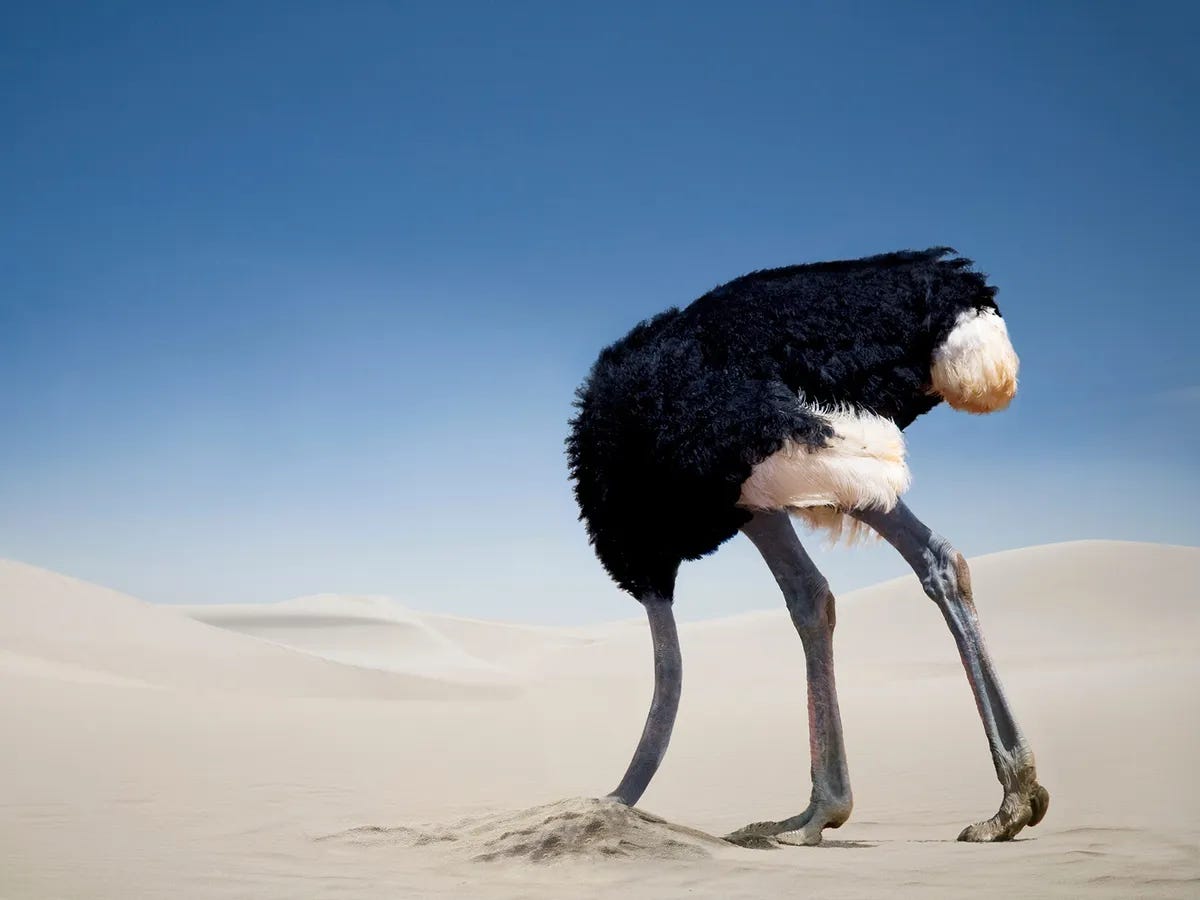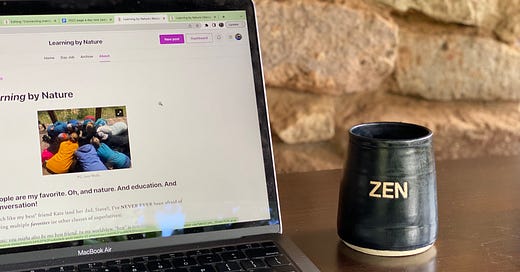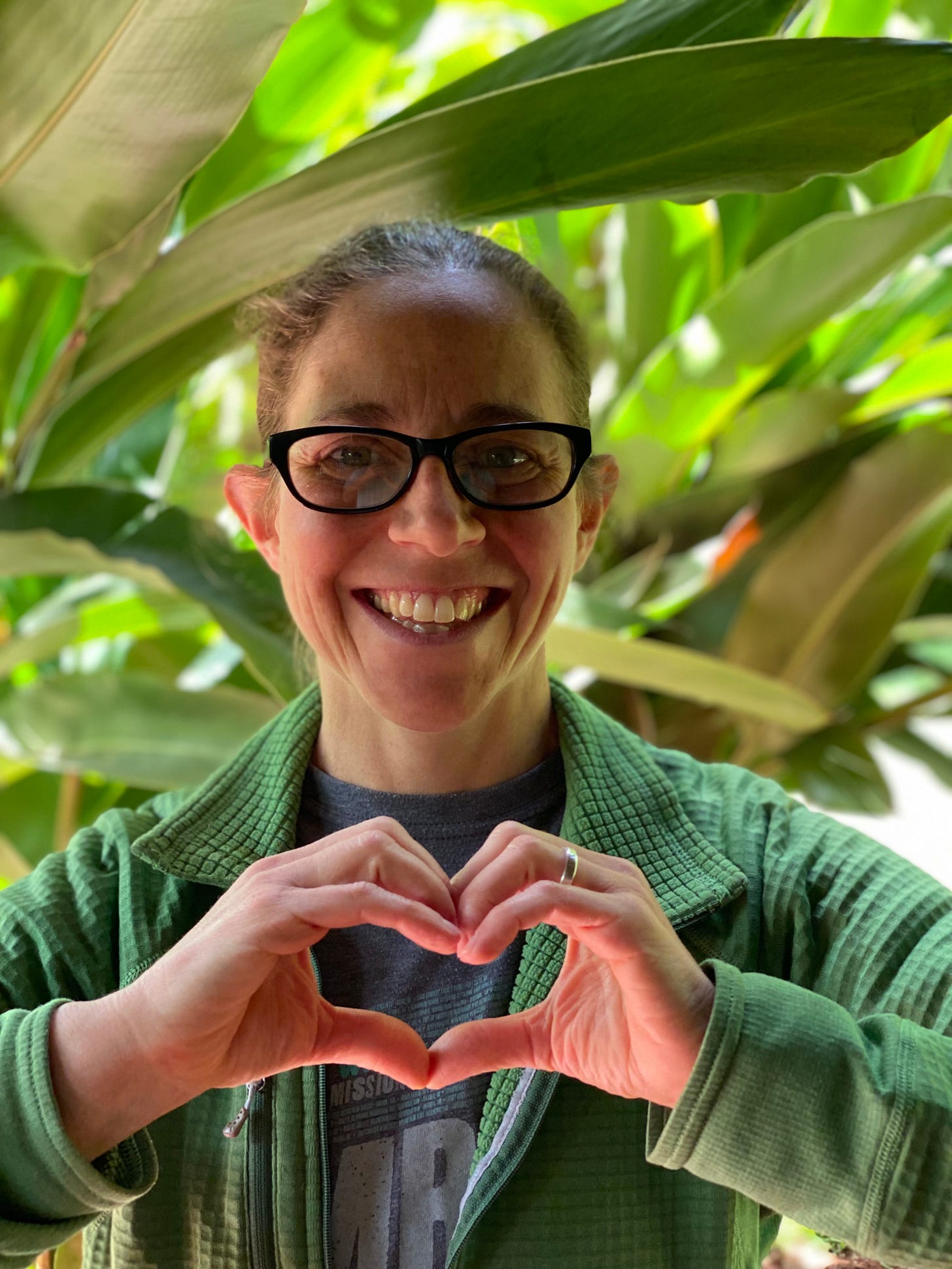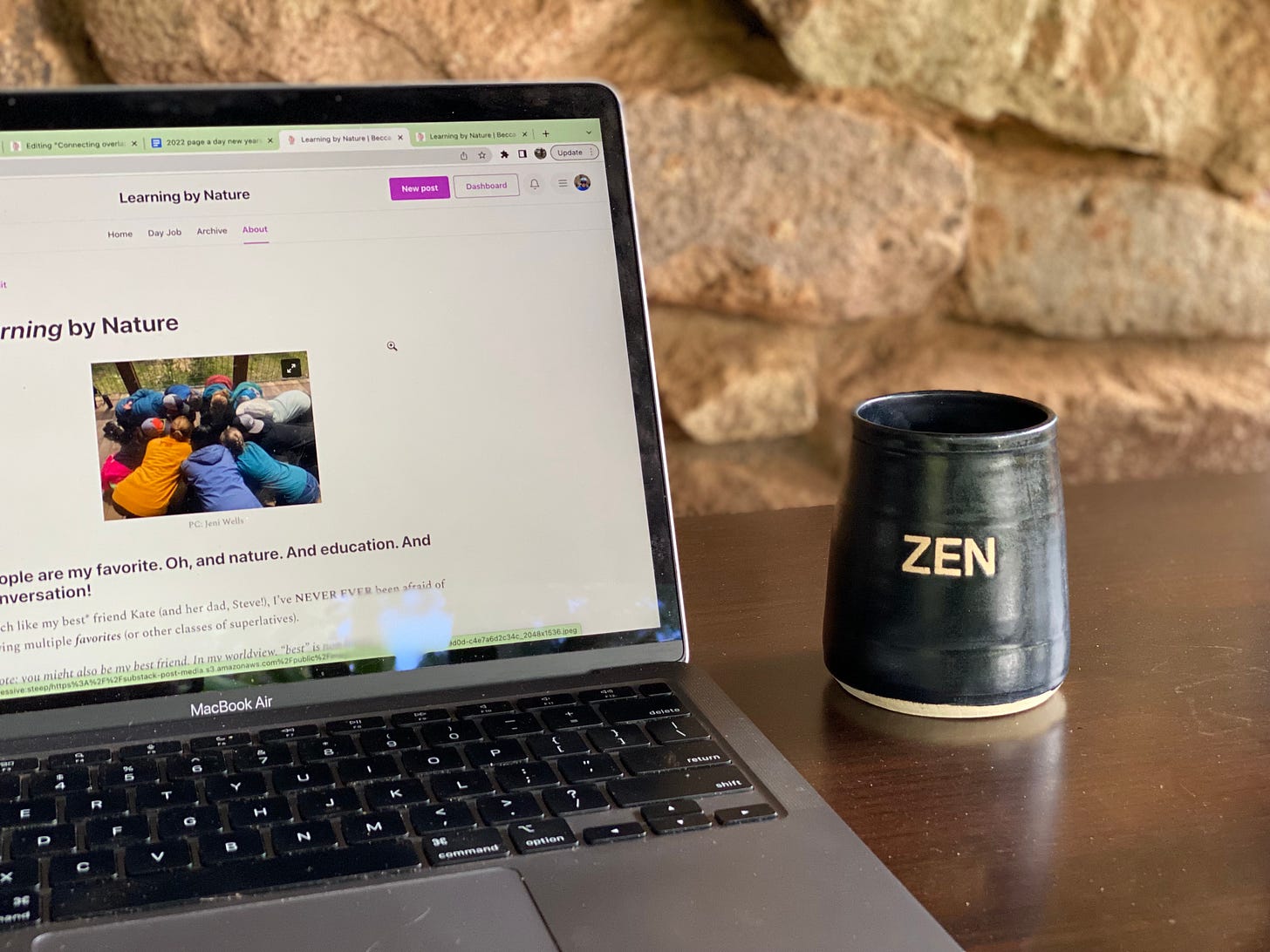Letter 1: Connecting overlapping dots
We need to embed routine, nature-based learning in public schools across the US
Dear You,
How are you? Where are you these days? What does this letter find you doing? I imagine something awesome, because you’re you. ❤️
Wait. I need to put down my pen so I can send you this:
I’m starting here, with you. By writing letters. Because I think they are a very intimate communication form.
And, they are the best analog-in-digital format I can think of.
And I want to be able to just really tell you what I’ve been thinking about without getting all gummed up in formatting or medium.
And I wish we could all just talk and be “in community.”
And, I suppose, if I am to successfully grow a really big movement for nature-based learning (which, I DO want to do), I need to embrace virtual community as well.
So, I’ll strive to make this as conversational and Becca-brain-flowy as I can. Because that’s me. And, as I start Learning by Nature, I’m aiming for at least monthly correspondence — fresh on the 3rd Tuesday. Plus I’ll definitely write back to your comments more often than once a month!
OK. Moving on.
The other day I sat down to work with this mug full of Rooibos Tea.
I got it from my mom, filled with a Gerbera-daisy (my faves!) rainbow right after Clara was born (she’s now 4.5!). Talented Leadville-based artist Erin Farrow has found her niche making what I call poettry (a fusion of poetry and pottery) - sometimes snippets from Mary Oliver or other fave poets, sometimes just 1-3-word phrases like “What the fucculent?” Admittedly, when I got the “Zen” mug, I initially tried to exchange it for one with a more fitting word since,
“My ‘Zen’ friend, Becca”
—said no one. Ever.
But alas, I never made it happen and the mug has now traveled from Leadville, Colorado by way of the Bahamas, Italy, Malta, Saudi Arabia, Djibouti, Tanzania, and now to Kenya, so it’s hardly fair to think about getting rid of it now! Plus, this mug is helping me commit to an intention I have, which is to write more. Which I think is a more Zen-like activity than many of my general pastimes. Hence this shiny-new Learning by Nature Substack.
Which I promise is about nature-based learning.
How many things do you know for sure?
I can think of just a few. That I love the humans I birthed into this world - Clara and Nora - so fiercely. That I love my partner, Eric. And Arty (our family’s dog-brother). And my non-nuclear family and friends. That I love nature. That I want to dedicate my personal and professional life to a more just, equitable world.
Beyond those things, I have nature-based learning, which is learning outdoors or bringing elements of nature indoors for learning – in any grade level and any content area. Anyhow,
I am sure nature-based learning is a force for positive change in our public education system. —said me.
It supports mental health and general wellbeing. I am sure it creates better conditions for learning and engagement and academic achievement. I am sure it fosters a learning ecosystem to nurture whole-humans (NB: I believe in whole-child, whole-community, and whole-teacher design). I also feel fairly confident (research is a bit more sparse on this so far…and my crystal ball + scientists know more is coming) it nudges us toward equity by taking on systemic injustices associated with racist housing, healthcare, and, most acutely, education systems. And, while we’re at it, nature-based learning also supports our planet.1
Research-and-data is starting to catch up2 (shout out to Cathy Jordan & Louise Chawla, for starters!) to document something many of us know in the core of our beings. Something *some*3 humans have relatively (on evolutionary time) recently unlearned: We are part of nature. Being connected with nature is good for us in myriad ways. And, human-nature connectedness is also good for nature.
Remaking Education
This might seem like a non-sequiter, but hear me out. Have you listened to Dr. Ulcca Joshi Hansen’s4 provocative new "The Future of Smart" podcast? Dr. Joshi Hansen always asks guests if they believe the U.S.'s public education is "in peril." Some say, unequivocally, "Yes." Others demure and talk about hope and bright spots. The upshot is that many education thought-leaders know public education is in need of radical change. And, thankfully, ideas5 are emerging for how to do that. (Education peeps reading this letter: please drop other inspiring ideas in comments for all of our benefit!)
I agree that continuing down the path of tinkering and tweaking (to borrow again from Dr. Joshi Hansen) on our current dysfunctional system is to ignore an increasingly obvious need to fundamentally rethink and remake our public education system to connect with and reflect the world now (which will sometimes require a humble look back at more original, indigenous pedagogies and learning-design efforts that have taken root in pockets but not en masse).
Still, as education thought-leaders remake our public ed system(s) (Yes, please!), I feel so intensely the need to support the humans — students and educators — who are in the broken system(s) right now, to extend a hand supporting real on-the-ground peeps as they simultaneously conduct today’s lesson, support a student whose family is broken, and handle a behavior challenge while packing everything up to move to these amazing remade systems when they come online.
Connecting overlapping dots
So I have a proposal for transitioning to those remade systems (can’t wait!) while addressing the gravity of the struggles and challenges found in classrooms across the U.S. in this moment. It’s called nature-based learning (I may have mentioned it to you before 😉).
In fact, I feel so strongly about this that when I sat down with Eric (my other whole) to practice a "pitch" for Good Natured Learning6, I said we intended to work in partnership with public school educators to deploy nature-based learning to (help) solve these two tiny-little problems:
(We’ll revisit those later).
I then explained how nature-based learning is a set of interventions or innovations that, with very little training and completely within the wheelhouse of public school *professionals* (experts!) can be embedded in classrooms immediately, literally tomorrow, to support the humans who are in the U.S.’s public schools RIGHT NOW.
And,
I added with my hands on my hips, voice getting too loud,
Routine nature-based learning is NOT HAPPENING in U.S. public schools7
In classic Eric matter-of-factness, his almost monotone and incisive response was something like:
It seems like the immediate problem that you can actually solve for is that there’s this set of super obvious, easy-to-do, low-cost tools (nature-based learning) that could be helping with lots of stuff right now and they’re not being used.
YES! Exactly! Finally, someone understands what we’re saying! Public education is hogtied, ostrich-style, by standards, accountability metrics, and so many unhealthy ways of being that we are failing to implement a low-hanging-fruit innovation that could really make a difference for real people — students and educators — right now.

Still, before I wrap up this getting-too-long first post leaving you feeling like you don’t know what nature-based learning really is (Definition reminder: learning outdoors or bringing elements of nature indoors for learning – in any grade level and any content area), I want to circle back to how nature-based learning is a set of super-simple, attainable, low-cost, low-risk, high-reward, actionable, equity-oriented innovations we can embed in routine teaching-and-learning immediately.
I’ll use our senses to paint a basic picture of what I mean:
👁️ It looks like more plants 🌱 and pictures of nature *inside* otherwise sterile and institutional-feeling classrooms in so many of our Nation’s schools. It looks like students learning (about ANYTHING) in the forest in your school’s backyard. Or among raised garden beds. Or even on a concrete patio with clouds floating by in the open sky.
👂It sounds like birdsong playing (form computer speakers!) during student work time indoors. Or an IRL (in-real-life) fight between a crow and a raven that happens while algebra students search for examples of symmetry in the landscape or on the outside of buildings. It sounds like wind in the trees or squirrels chirping. Like kids excited to be learning and moving their bodies.
👃 It smells like pine-needles or fresh-cut grass. Like rosemary or sage or other herbs in a classroom windowsill garden. Like potted flowers 🪴 and soil.
🤚 It feels refreshing. Like a short “brain break” and breath AWAY from Chromebooks. It feels calm and free. Liberatory even.
We need to connect the pedagogy dot to the nature-is-good-for-humans dot. And, when we remember that public education is FULL of adults who want good things for their students AND who deserve to have some personal wellbeing too, it seems like the dots are so aligned they are almost nested on top of each other. Perhaps that’s why we’ve (i.e. society) had a hard time connecting them — because one is covering up the other?
I know we can connect these dots, though. With some professional development in nature-based learning and a bit of structural support, routine nature-based learning can be implemented by any teacher in any school anywhere.
We just need to do it. And when we do, we’ll make headway on those tiny-little problems (mental health state of emergency, various teacher crises, you know…)!
For now, I’ll sign off. I’ll be back next month.
Take care,
Becca
PS - I hope you’ll write back! I (would) love getting some letters comments in the mail here!
I’ll revisit these infographics and the incredible Children & Nature Network - who compiles so much of the recent research on this topic - in many of my letters.
Yes, more research will always be helpful!
(More on which humans have forgotten in future letters)
Ulcca Joshi Hansen is host to Grantmaker’s for Education’s: “The Future of Smart” podcast and author of award-winning book: The Future of Smart. Ulcca has given a TedTalk (probably many!) and been interviewed on loads of podcasts. Most recently, I heard Ulcca on Tim Logan’s - Future of Learning Design podcast.
For starters, you can explore:
Good Natured Learning, is a non-profit I recently co-founded with the incredible Erin Allaman. We focus on building educator capacity and activating nearby nature for teaching and learning because we envision a very-near future in which public school students and educators have routine, equitable access to Nature Based Learning’s benefits - including mental and physical wellness, improved cognition, enhanced social emotional and 21st Century skills, and joy - in school." More on this to come as well, I’m sure.
With some notable and awesome exceptions and among what Richard Louv calls “iconoclastic” educators — PLEASE SHARE and CELEBRATE these examples in the comments!






Love this post Chewie/Becca. Your voice and sincerity shine through, and it feels like we're having a discussion (over papers we're supposed to be grading! ;) ) and I love the flow of your writing. THANK YOU too for always bringing up specific examples of what NBL really is. I think that's some of the strongest ways to send your message into the world. (Hi Erin F - I happily enjoy tea from one of your mugs, that Becca sent me years ago, every evening! - those mugs are magical for brining good things to bear!)
I love the examples using the senses- so helpful and specific. Thanks for writing, Becca!